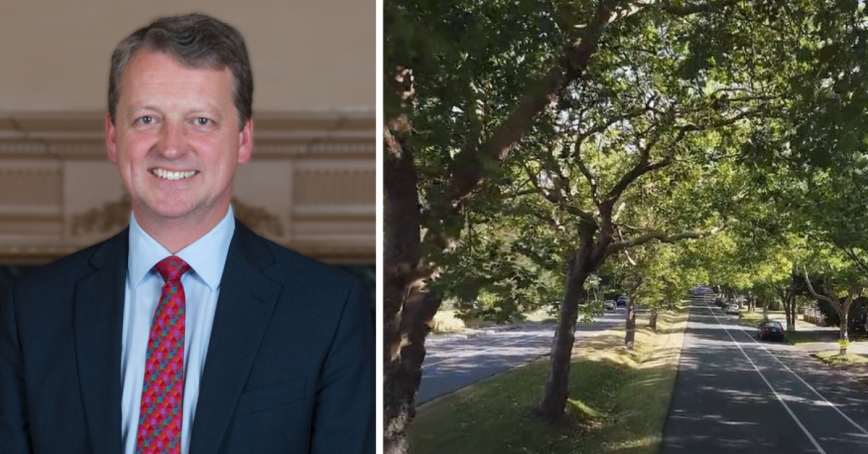Shelbourne Street trees of remembrance given new life

October 2, 2021 marks a century since 5,000 residents of Greater Victoria gathered together along Shelbourne Street to plant the first memorial London planetree. The ceremony was held in memory of the 600 local soldiers who died in the First World War. (Only 200 of the original trees planted remain. Like those long-ago soldiers, they have fallen, too.) A new film, produced by Prof. Geoffrey Bird and airing on CHEK TV on Saturday, Oct. 2 at 6:30 p.m. traces the story of the trees from memorial to forgotten sentinels to reviving their history.
Bird’s documentary tells the story of the memorial trees as part of the 30 short films of the War Heritage Research Initiative that he began making with the support of Canadian Heritage in 2015. The film was made with the major financial support from the District of Saanich, local property management company Wesbild, the Saanich Firefighters Association, the Saanich Legacy Fund and private contributors. The film is now available online on the War Heritage Research Initiative site.
“How do we avoid forgetting?”
The documentary series tells very different stories, says Bird, but he notes that every one of them has the same question at its essence: “How do we avoid forgetting?” The memorial trees along Shelbourne are the living embodiment of that dilemma, he says.
“What I’ve seen through my work is that the silencing and forgetting of Canada’s war history is an ongoing battle when it comes to our sites of memory. The memorial trees reflect that challenges and politics of remembrance,” says Bird. “They are trying to survive in a changing world. They start out revered, then forgotten, then cut down or with their branches hacked back to make way for telephone lines. Pretty soon, nobody even remembers why they were planted in the first place.”
Documenting the history of those trees was a passion project for another Saanich man, Ray Travers, who approached Bird a few years ago with the idea for the film. Travers is interviewed in the documentary, filmed not long before he passed away in July 2021.
Sharing stories with the next generation
When the trees were planted in 1921, Shelbourne Street stretched largely through farmland. Their planting was a very big deal at the time, with 5,000 people attending the October 1921 dedication of what was being called “Memorial Avenue.”
The role of the trees of remembrance has evolved over the last century.
The pressures of development have been relentless over the decades, prompting Travers and other Saanich citizens to launch their own campaigns to return the purpose of the trees to public memory. A rededication ceremony was held in September 2018, and interpretive plaques were installed alongside some of the trees.
Now, they are a memorial to Greater Victoria residents lost in all of Canada’s wars. In 2010, a local school teacher and grade 7 students at Gordon Head Middle School planted two trees for two residents killed in Afghanistan, Andrew Nuttall and Myles Mansell. In 2018, the trees were rededicated by Saanich, placing a metal marker on the top of sign posts along Shelbourne Avenue and interpretive boards at various places along the boulevard.
The role of the film is to bring awareness of the trees and champion society’s obligation to remember the sacrifices made by individuals to the greater good. The public, including students, can access these films online.
“The Shelbourne trees remind us that there are things we pass by every day that have huge meaning to people,” says Bird. “Again, that question: How do we avoid forgetting? What responsibilities can we take today to honour their sacrifice?”
******************************
Prof. Geoffrey Bird leads the War Heritage Research Initiative as part of his work at Royal Roads. He has made more than 30 diverse short films to date that explore the stories found at sites of memory across Canada from the First and Second World Wars. His films cover everything from the Dene work mining uranium for the making of the atomic bomb; the memorial chamber in the Peace Tower of the Parliament; an exploration of Canada’s conscientious objectors; the internment of Japanese-Canadians and uncovering the life of a single soldier commemorated on a number of Canadian memorials.
Bird welcomes donations toward research and film work on Canada’s war heritage. Contact Bird for more information.